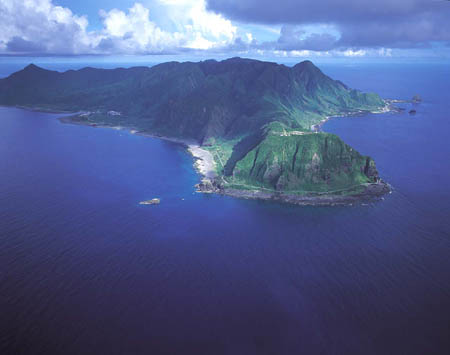
Societal Choices Impact Biodiversity in
Forest-Agroecosystem Matrix
The Making of Conservation in a Pacific Island, Lanyu
Cheng-Heng Hu, Conservation Biology Program, Univ. of Minnesota, US
|
PDF photo : |
(ps: need a adobe pdf viewer? ) |
This project proposes to adopt a micro-comparative approach to examine how local individuals and social groups experience the alleged modernizing or development process, and their anti-systemic responses to the formation of a worldwide capitalist system. At present, the East Asian region has become the new epicenter of global capital accumulation, and provides an excellent non-European spatial cluster to study human social life under global capitalism. I intend to choose a peripheral island of Taiwan, Lanyu, to study the relationship between rural social life and management of living resources as consequences of peasant reactions to the global capitalizing trend.

In this area study, local structure of social life is primarily framed by the large historical process. Before the Treaty of Shimonoseki in 1895, the Yami people in Lanyu lived in primitive agrarian and fishing communities and witnessed the decline of the Chinese Empire. In the twentieth century, these indigenous people experienced Japanese expansion in a 50-year colonial period, and then the national-state formation of Taiwan in the postcolonial stage. In just a half-century, this 45-km2 tropical island between Taiwan and the Philippines has been incorporated into a part of a global capitalist system through natural resources exploitation and labor out-migration to Taiwan. During the period of diversified social changes, their gift economy (trade goods instead of cash) has been gradually overwhelmed by a new mode of economic exchange, cash.
Capitalism directly influences people's social lives and challenges the traditional distribution of biodiversity goods, such as varieties of crop food. It introduces new-forming social inequalities and internal differentiation of peasant communities. By increasing small-scaled capital in local agriculture, local capitalist development usually leads to an enlarging wealth gap between rich and poor strata, which means the poor suffer more and there are more of them. In the interaction of vanishing traditions and new capitalist structure, there are severe declines in environmental biodiversity, land fertility and social equality. The correlated deterioration of environment and social life requires causal explanation and urgent solutions.
In this context, struggles against the deterioration of environment and natural resources represent a challenge to the global capitalist system. How do local people use biodiversity to survive? How do they manage biodiversity to experience poverty and environmental degradation? To address the strength of the local people, I will study their agriculture to understand how they fight for survival through manipulating crop diversity. By examining their peasant resistance such as illegally occupying national forest to cultivate taro, the following hypothesis is proposed to be tested: Agronomic culture and its related use of taro diversity serve as the core material foundation for the Yami to interact against the capitalist system.

To the Pacific Islanders like Yami, taro crop in Lanyu is the primary staple of local subsistence economics and significant goods for social exchange as gifts. A number of ethnographic studies describe the details of how Yami people intensively use taro plants, and how taro plays diverse functions in their daily lives, such as starchy food, pig fodder, packaged fiber and ritual symbol. To farmers, the primary way to protect food production in low-input farming systems is crop diversity, which is manipulated and sustained by local agronomic knowledge. As means of production, this knowledge of living resource management has a two-fold function: to maintain social solidarity and to resist outside disturbance. In the modernizing process, the exchange of taro variety in particular social networks may serve as a new process for peasants to use their special knowledge to run counter to global capitalism. But none of the existing agronomic studies have attempted to examine how Yami subsistence knowledge has changed taro diversity through local social processes of resource management, which have also changed to correspond to the whole capitalizing process. These changes may provide an excellent opportunity to test and revise the ideas regarding the ultimate human fate under the global capitalist system, and to examine the patterns of solutions that local people have found from their resistance and struggle.
I will compare current taro agriculture and farmers' knowledge among different groups and social networks in two indigenous villages. Yaro village, located on the west coast with the only trading harbor on the island, has experienced major modernization. In contrast, Ivarinu village still keeps a relatively traditional lifestyle on the east coast of Lanyu. These two communities are ten miles apart with mountainous geographic barriers and maintain regular communication through the only road around the coast. In these two villages, the comparative understanding of their taro culture and its supporting mechanism of social life can serve as the keys to understanding how local adaptive knowledge secures sustainable resources in confronting modernizing impacts. From past researches in local resource management, scholars identify that the farmers' practical knowledge ensures maintaining crop diversity to meet multiple local needs, and ultimately makes their crop production and agroecosystem resilient enough to tolerate outside natural and social disturbance. The newly forming complexity and strategies of agronomic knowledge for embedding capitalism will provide us with updated information about peasant reactions to the big capitalist structure.